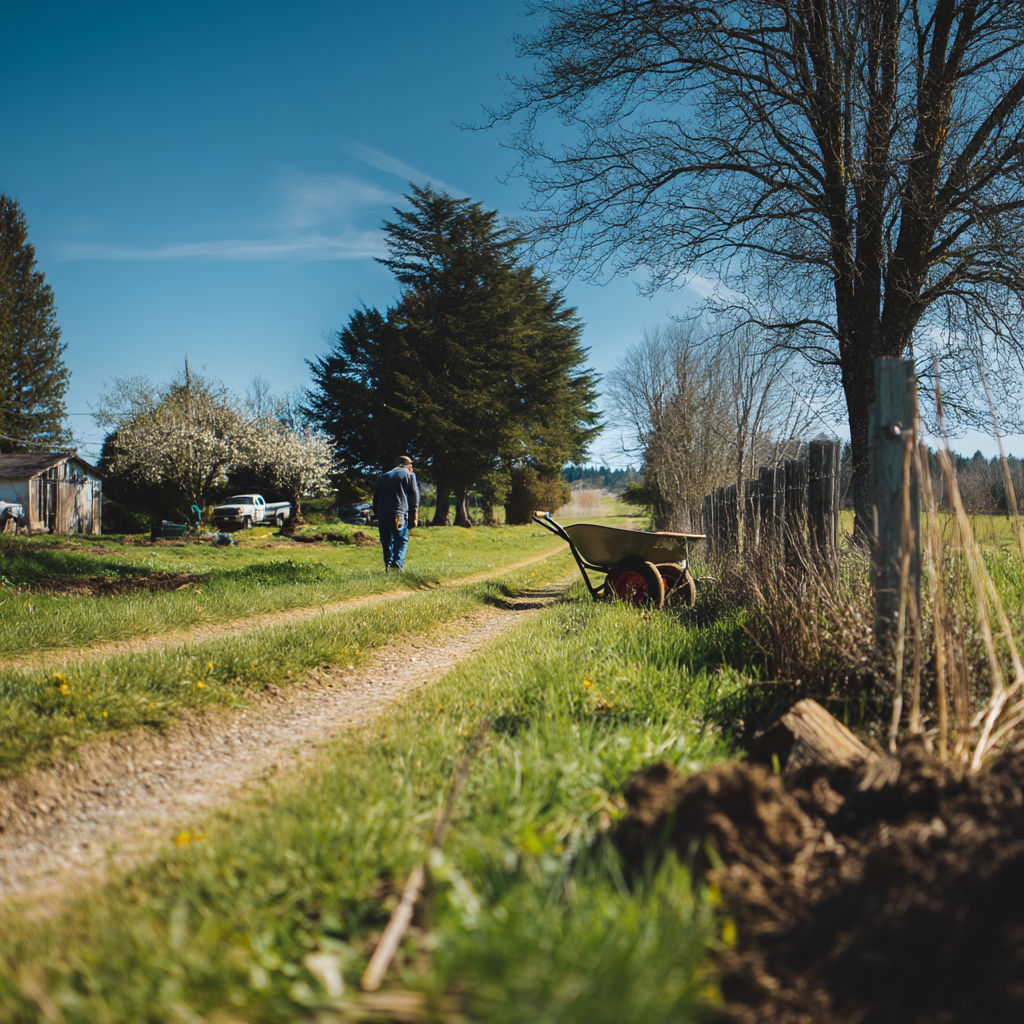Welcome Spring with Smart Land Maintenance
Ah, spring! The days grow longer, the soil begins to warm, and nature stretches back to life. But while flowers bloom and birds sing, landowners know it’s go-time for getting their land in shape. Whether you’re farming, ranching, managing timberland, or simply maintaining a rural property, spring presents the perfect opportunity to reset the land’s health, enhance its value, and set it up for year-round success.
But here’s the twist—spring land maintenance isn’t just about mowing and planting. It’s about understanding the land’s cycles, using weather windows wisely, and investing in the long-term resilience of your property. Ready to dig into what your land really needs this season? Let’s go.
Check for Winter Damage
Before diving into new growth, assess what winter left behind. Frost, heavy snow, and winds may have compacted your soil or downed trees and branches. Inspect fencing, drainage ditches, roads, and outbuildings for visible damage.
To-do list:
- Walk fence lines and replace broken posts
- Clear branches from access roads and trails
- Look for signs of erosion or water pooling
- Inspect culverts for blockages
Early fixes now prevent costly repairs later—and let’s be honest, no one wants to discover a snapped fence when the cows are already halfway to the neighbor’s pasture.

Soil Testing: The First Step Toward Healthy Growth
Great land maintenance begins with great soil. If you’ve never done a soil test or it’s been more than three years, spring is the best time to check pH and nutrient levels.
Why it matters:
- Soil acidity can make or break crop and grass performance.
- A simple test helps tailor your fertilizer strategy and prevent overuse.
- Balanced soil supports better water retention and root development.
Pro tip: Your local extension office or conservation district likely offers low-cost testing. It’s one of the cheapest and smartest investments you’ll ever make in your land.
Control Weeds Before They Wake Up
Want to know a dirty secret? Spring weed control starts before the weeds fully arrive.
Apply pre-emergent herbicides or mow high-risk areas early. Target invasive species like thistle, ragweed, and multiflora rose before they go to seed. Not only does this help your grasses and crops flourish, but it also saves money in mid-season labor and chemical inputs.
And if you’re following regenerative practices, explore alternatives like targeted grazing, controlled burns, or cover cropping to suppress unwanted growth without synthetic inputs.
Check Your Pasture: Rest, Rotate, Reseed
Your livestock might be ready to graze the moment grass appears, but don’t be too hasty. Overgrazing spring pastures can weaken root systems, reduce summer yields, and invite erosion.
Pasture care checklist:
- Let grass reach 6–8 inches before grazing begins
- Rotate animals regularly to give pastures time to rest
- Consider overseeding thin areas with drought-tolerant mixes
- Spread compost or natural amendments to boost microbial health
It’s all about creating a system where your soil, animals, and grasses support each other. That’s the sweet spot.
Repair Roads and Trails
Mud season is brutal on unpaved roads. With thawing and rain, spring is a great time to reshape, regravel, and restore your access points.
Tips for roadwork:
- Grade when the soil is moist, but not waterlogged
- Crown roads to promote runoff
- Add geotextile fabric under gravel in trouble spots
- Seed ditches and edges with erosion-control blends
Maintaining roads not only protects your investment but also keeps you compliant with local conservation rules if you’re near waterways.
Clean Up Downed Trees and Deadwood
Spring storms knock down limbs, and some trees won’t survive the winter. Clearing deadwood improves safety, opens up sunlight, and reduces fire risk.
You have options:
- Turn large branches into firewood
- Chip smaller ones for mulch or erosion control
- Use slash piles for wildlife habitat (if fire risk is low)
Bonus: This is a great time to scout timber stands for future harvest planning or health thinning.
Manage Water: Ditches, Drainage, and Ponds
Good water management defines great land stewardship. Walk your ditches, swales, and ponds looking for erosion, sediment buildup, or signs of blockage. Spring is the ideal time to dig out silt, reshape edges, and reseed bare ground.
If you rely on surface water for irrigation or livestock, check pumps, pipes, and inlets before summer demand peaks.
Plan Your Planting Season
Thinking about trees, wildlife plots, or perennial pasture? Spring is prime time to plant—but don’t wait until it’s too warm.
Cool-season grasses and native perennials often thrive with early planting. For timber or habitat projects, consider species suited to your soil zone and future goals—like pollinator support or windbreaks.
Fire Safety: Clear the Zones
If you’re in a wildfire-prone area, spring is your window to prep defensible space. Create firebreaks, trim branches away from structures, and remove fine fuels like dry grass and leaves from around buildings.
Also, double-check your burn permits and local burn restrictions before lighting up that brush pile.
Update Your Land Management Plan
Spring is when intentions become actions. Pull out your land or farm plan and update it with fresh soil data, new goals, or evolving practices.
Questions to ask:
- Are you reducing tillage?
- Shifting toward silvopasture?
- Expanding native habitats?
- Planning to enroll in conservation programs?
Spring is a natural time to align your seasonal maintenance with long-term stewardship.
FAQs
Why is spring maintenance so critical for landowners?
Spring marks the start of the growing season. It’s your best chance to address winter damage, prep soil, and set up sustainable practices that improve yield and property value.
How often should I test my soil?
Ideally, every 2–3 years. More frequently if you’re changing crops or making big adjustments to fertility.
Can I do pasture maintenance without chemicals?
Absolutely. Managed grazing, compost applications, and reseeding with diverse mixes are natural tools for healthier pastures.
When should I start mowing pastures or open land?
Late spring—when grasses are 6–8 inches tall and established. Early mowing can stunt regrowth.
What’s a good resource for planting native species?
Start with your local extension office or NRCS agent. They offer regional-specific advice and may provide cost-share opportunities.
How do I know if I need professional help?
If you’re managing large acreage, facing erosion, or starting a new enterprise like agroforestry, a land consultant or conservation planner can save you time and money.




